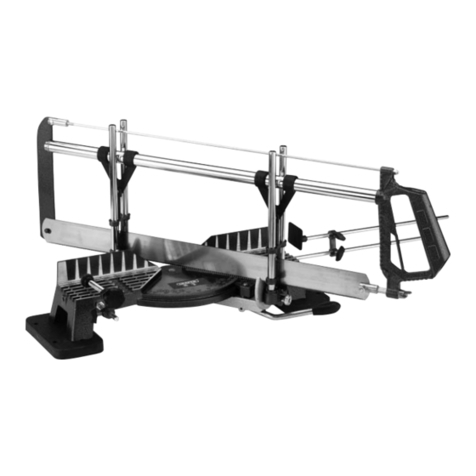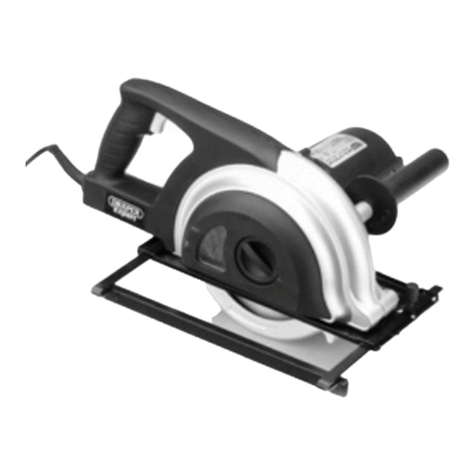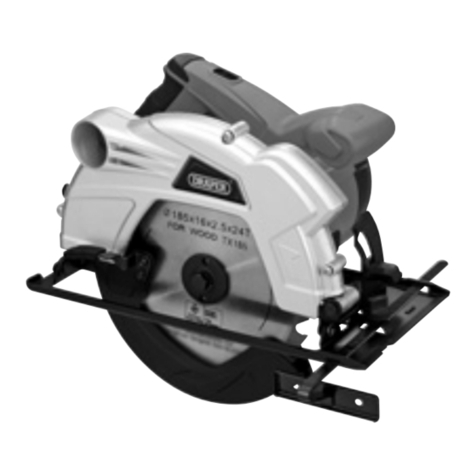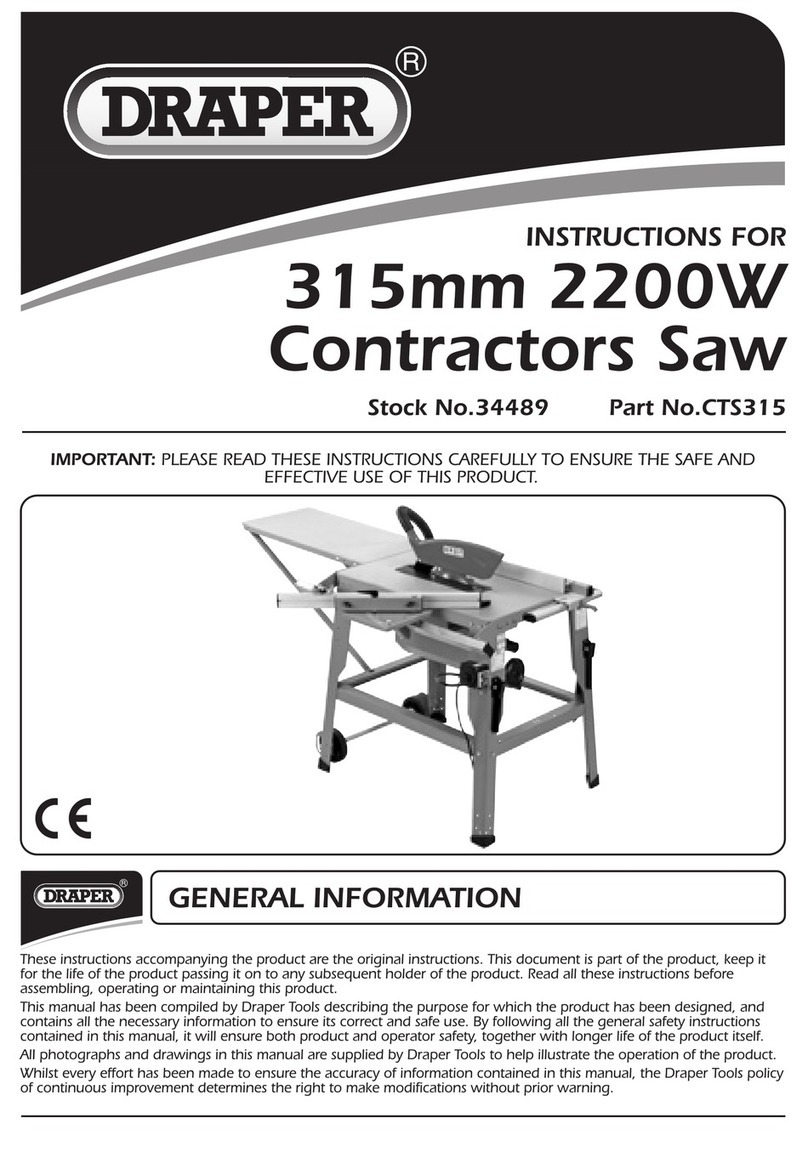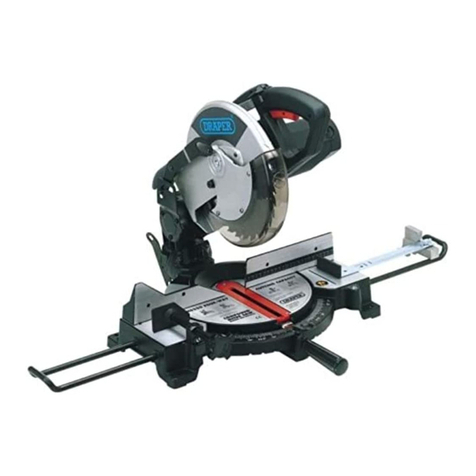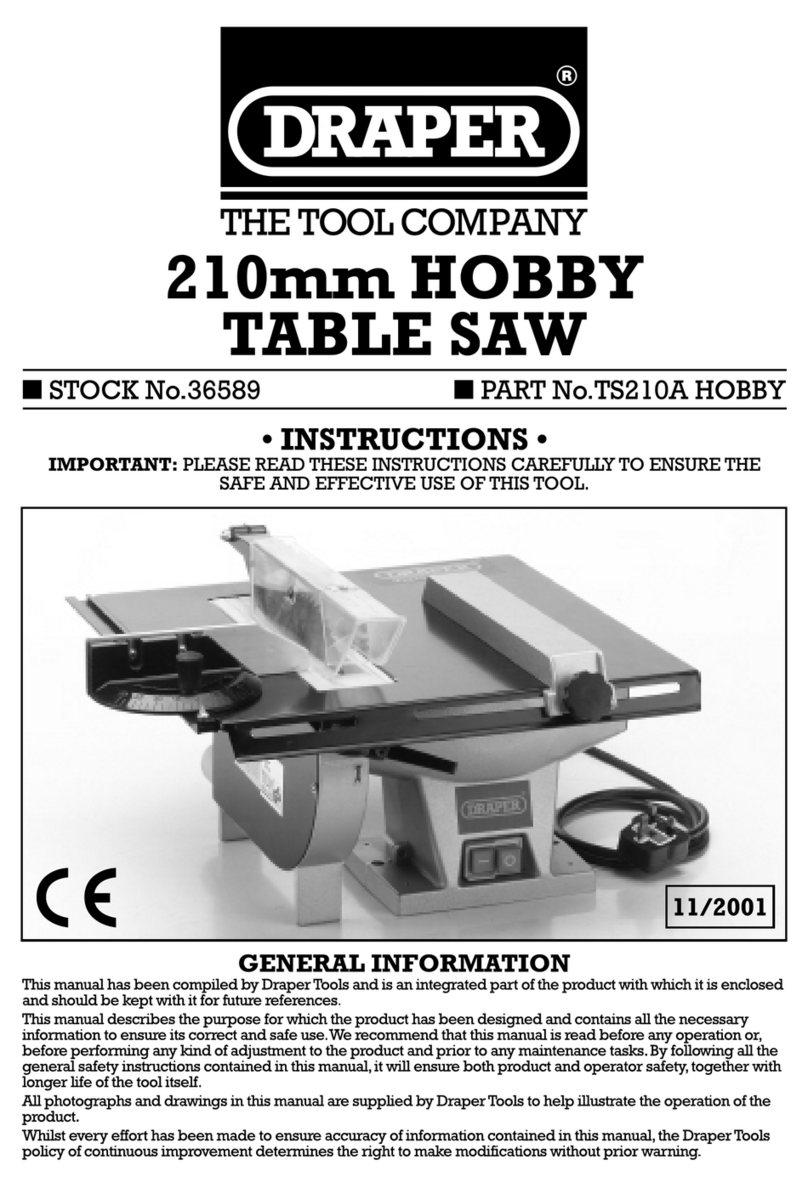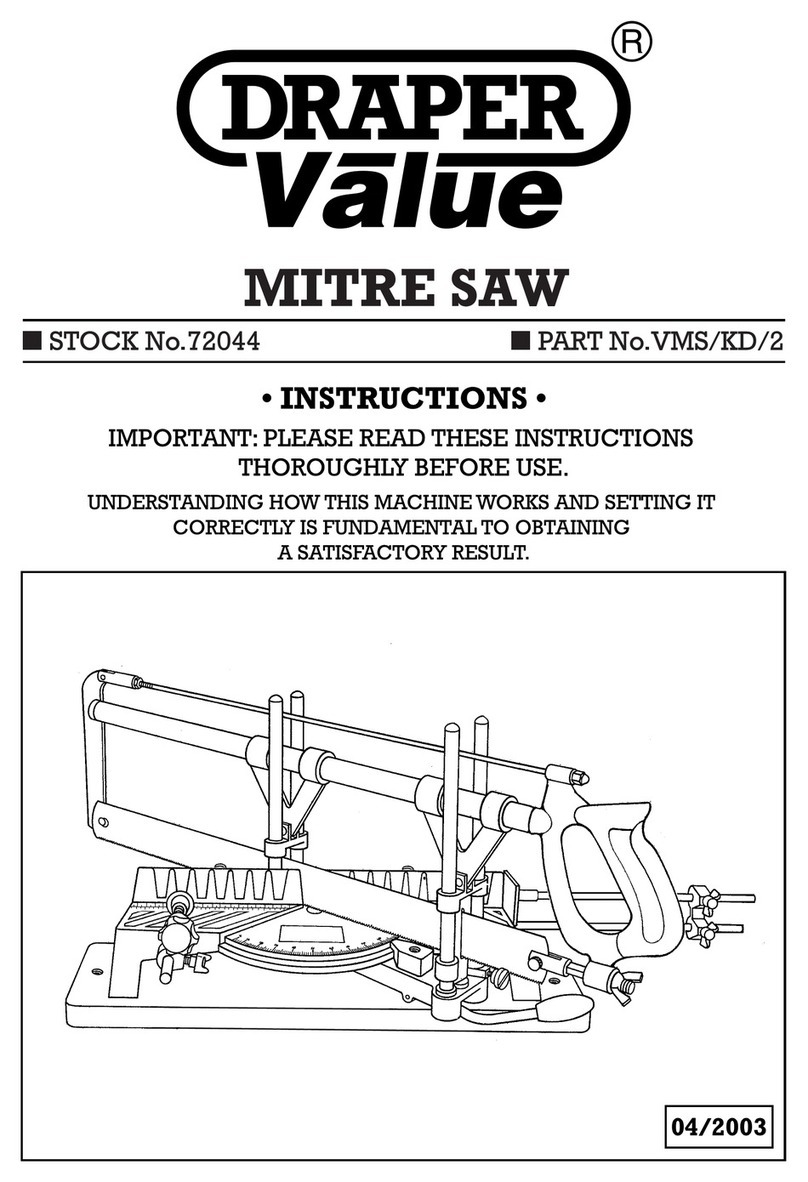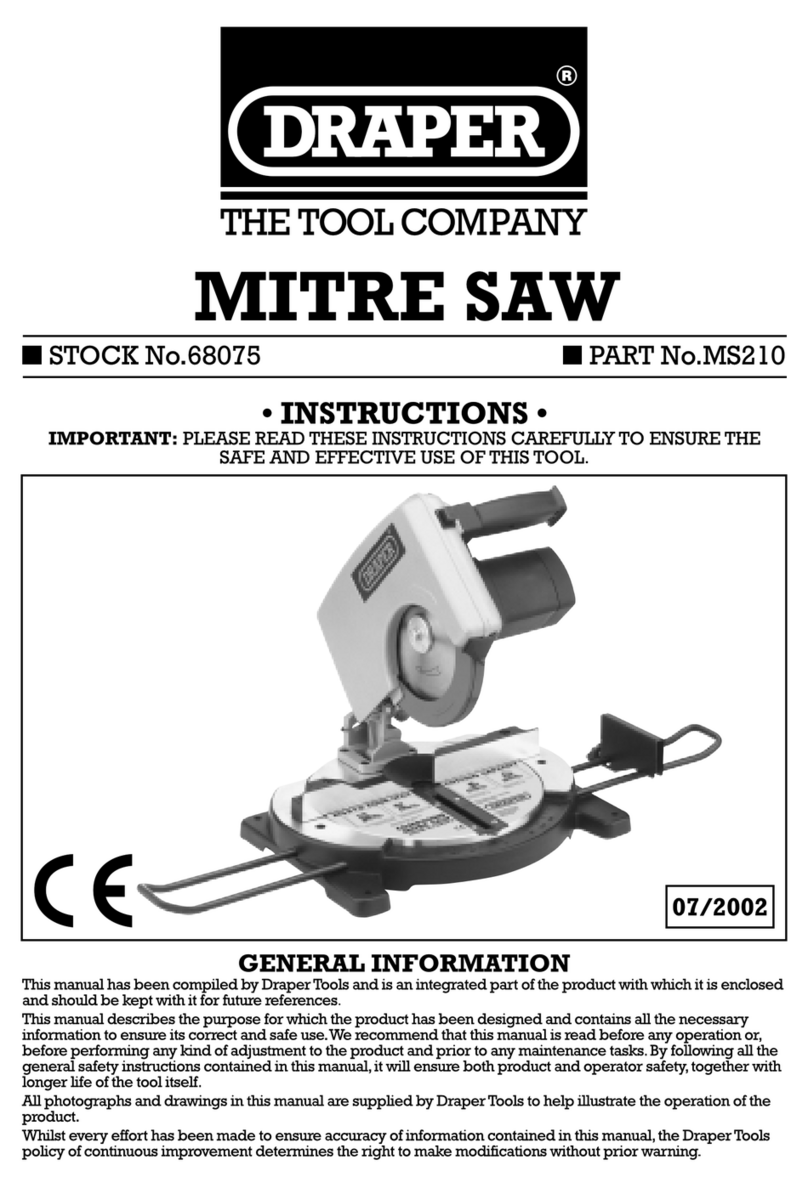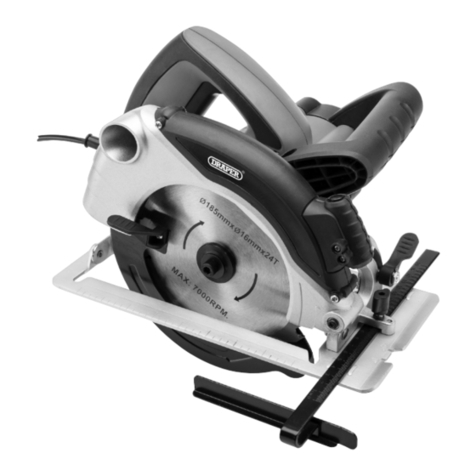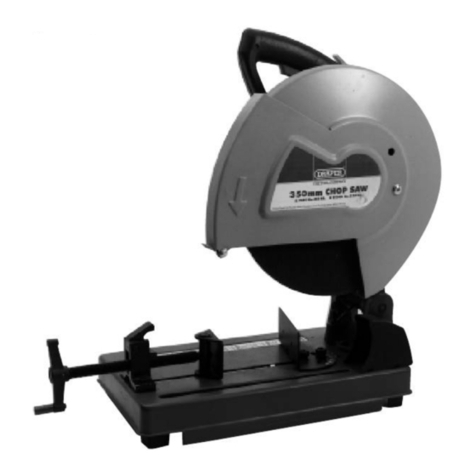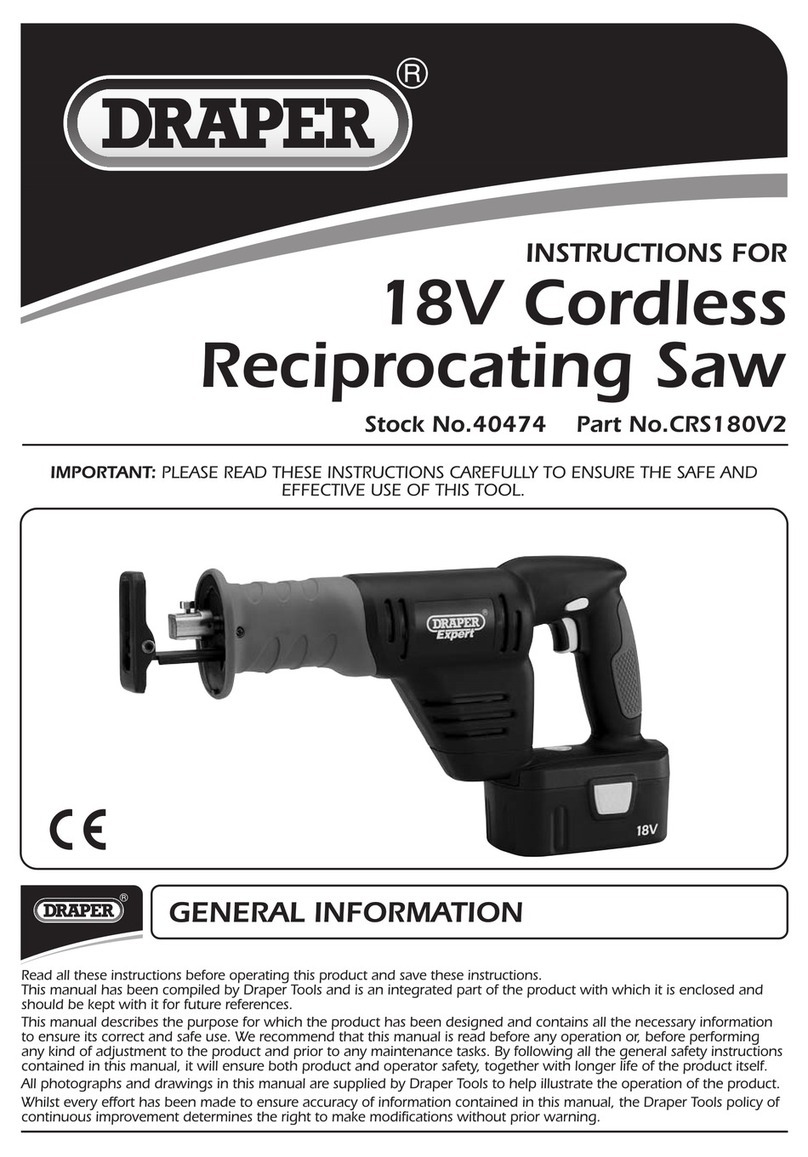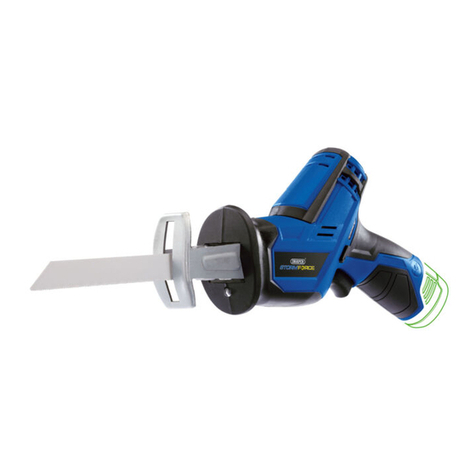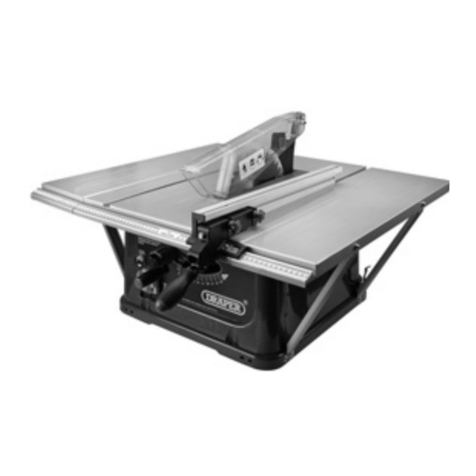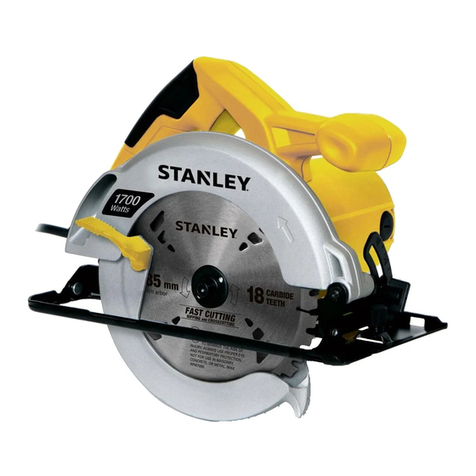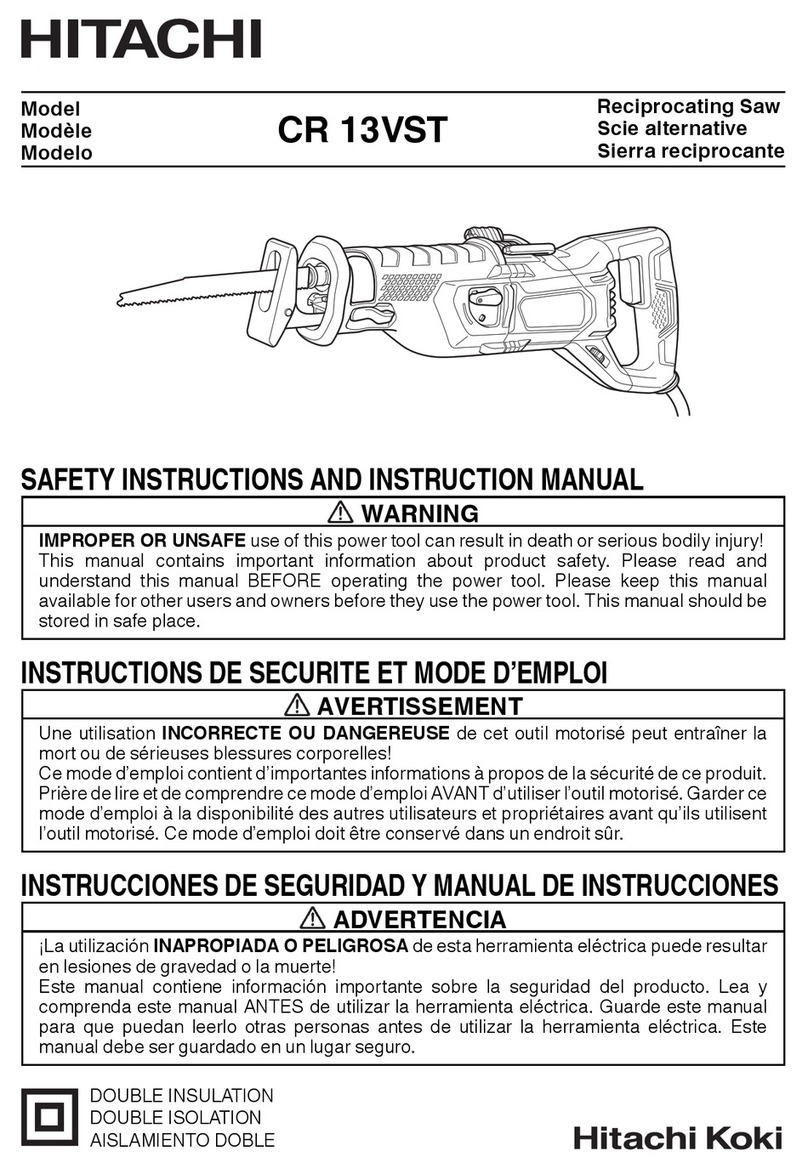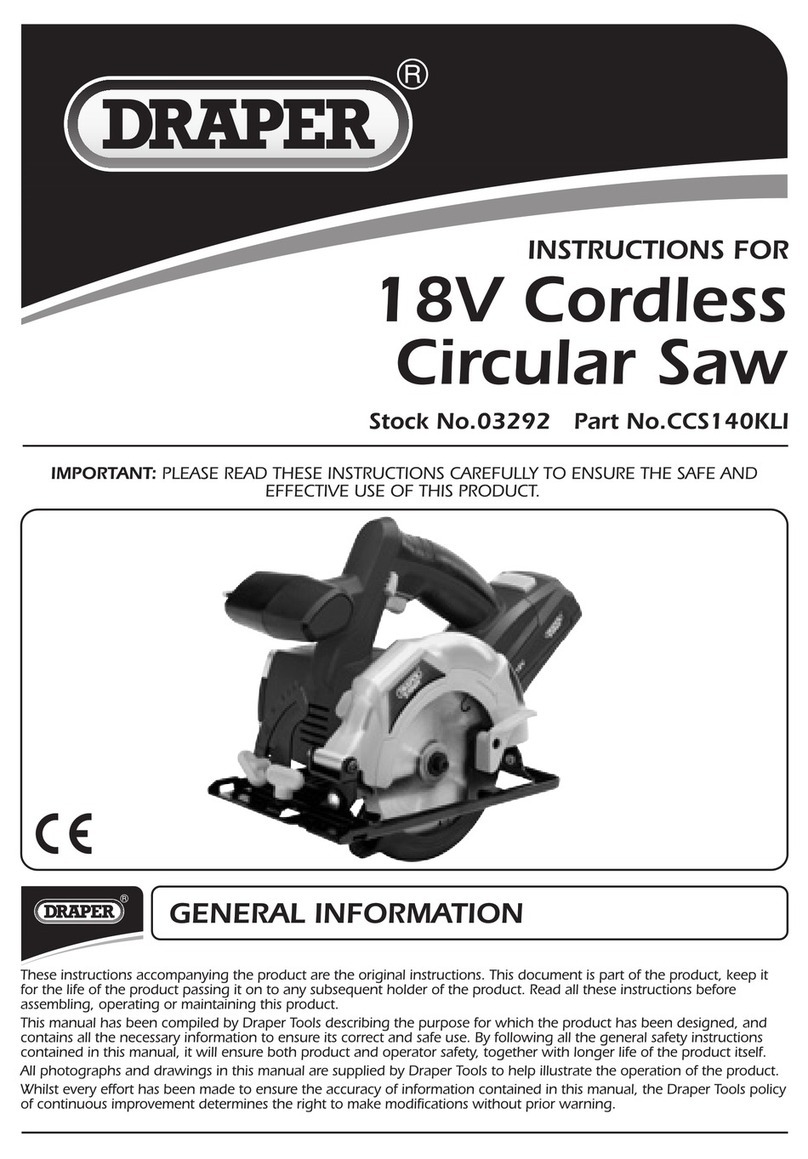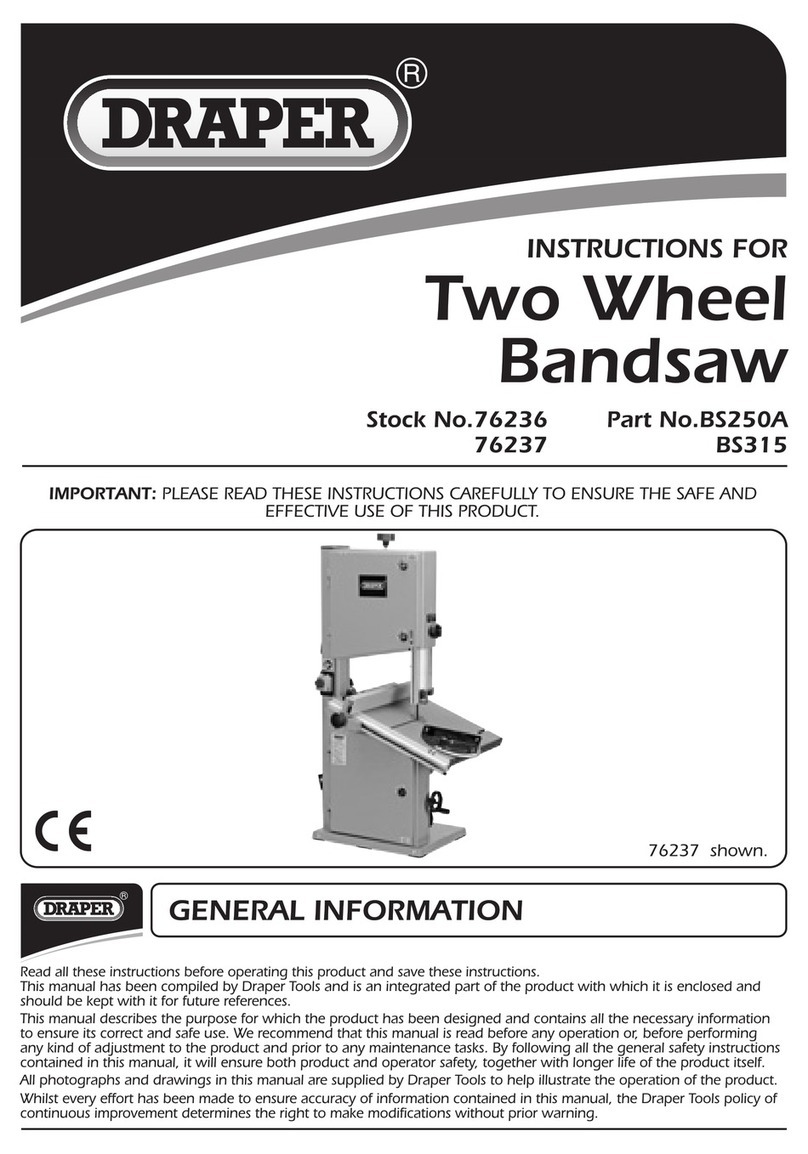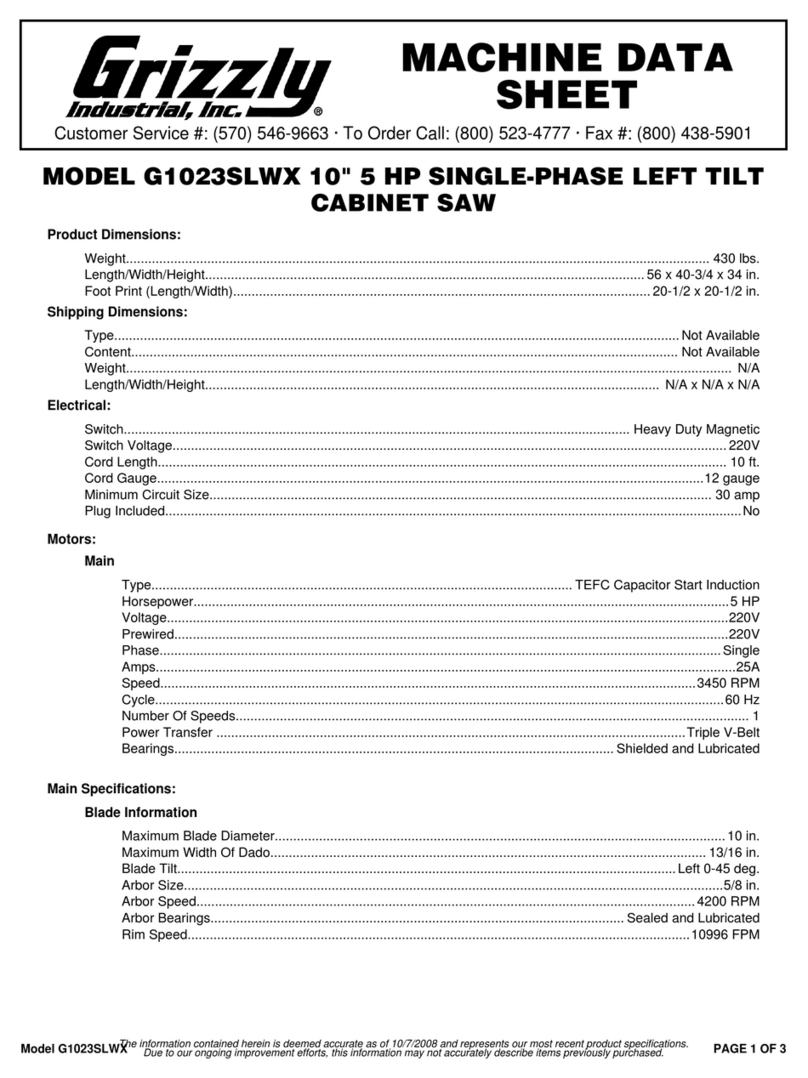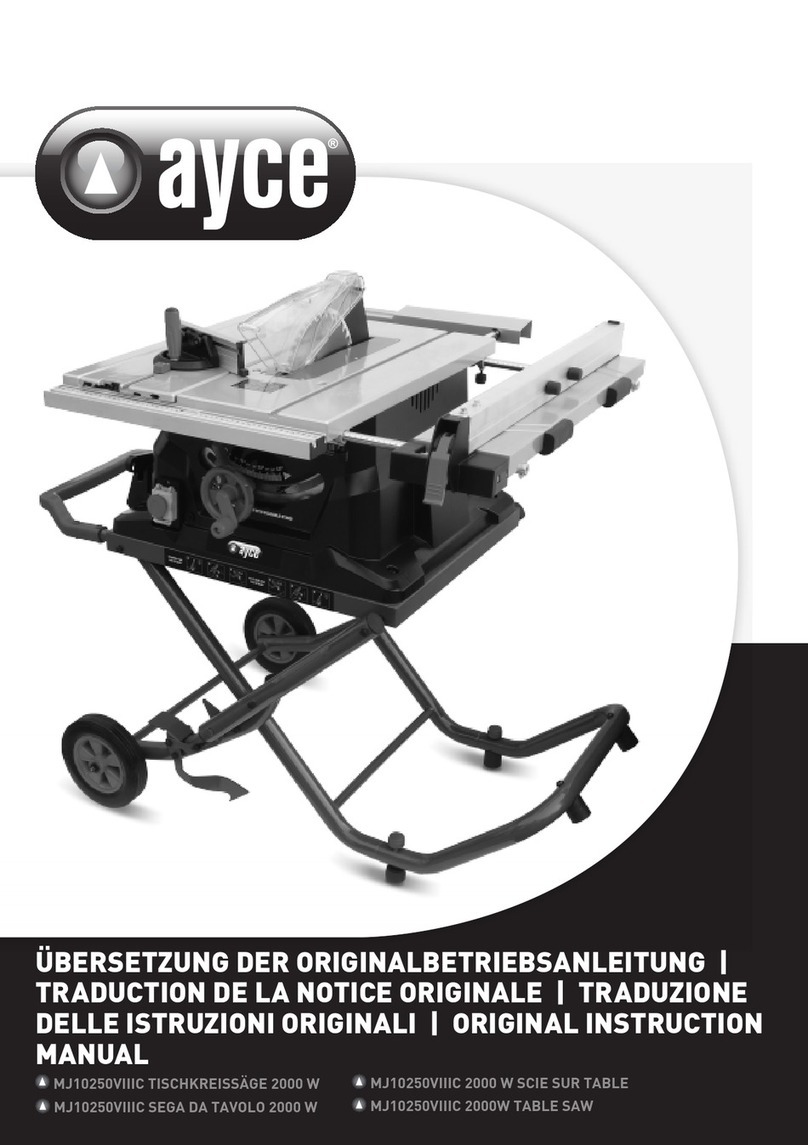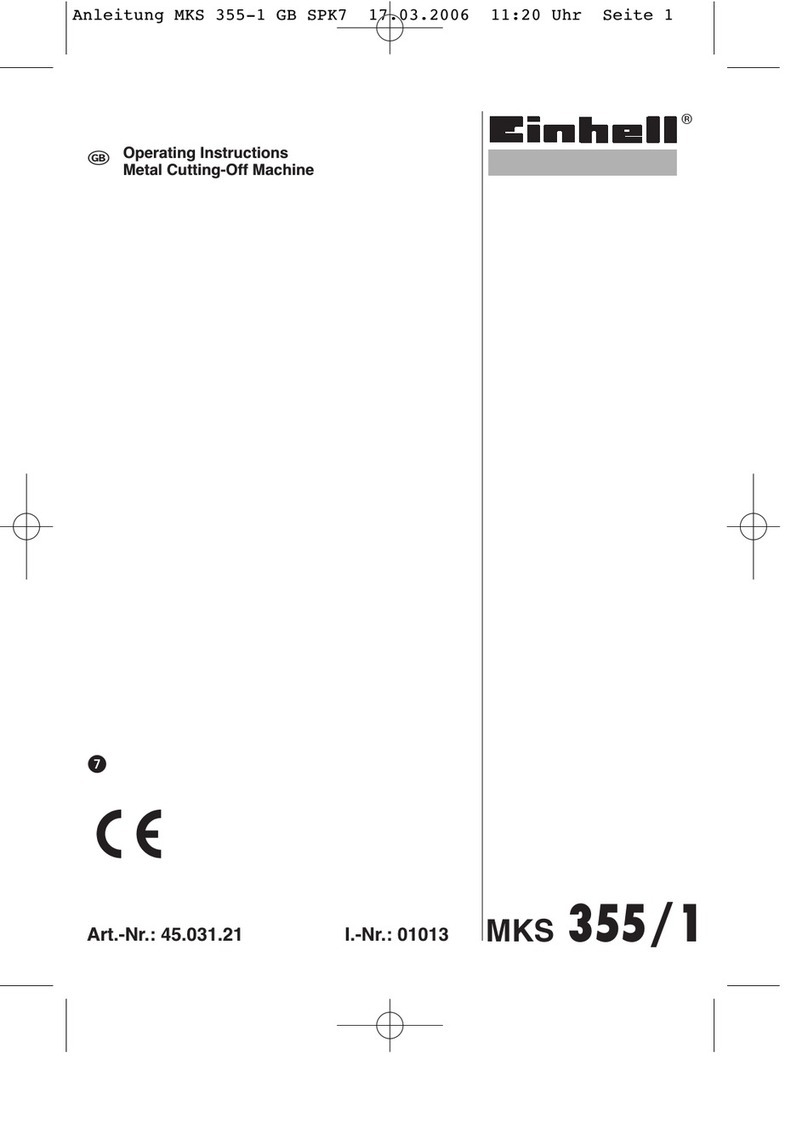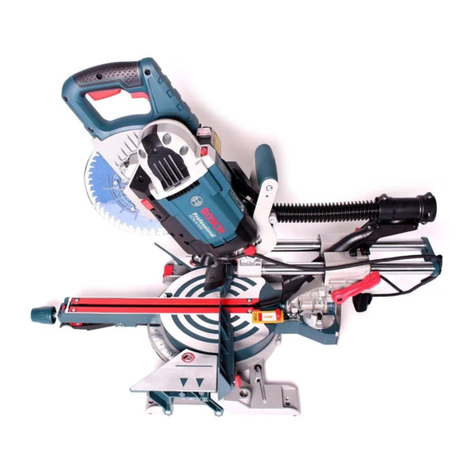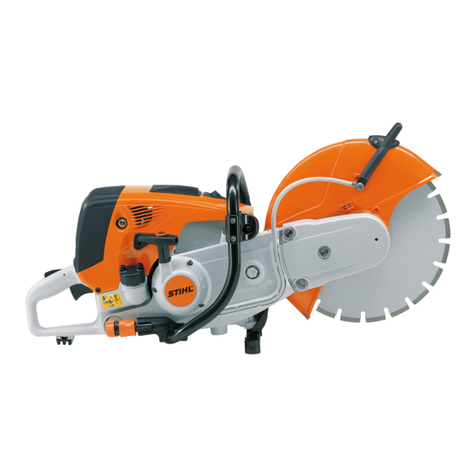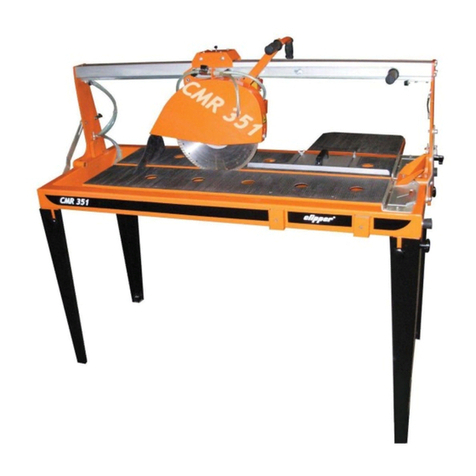
825
5. HEALTH & SAFETY INFORMATION 12. TROUBLESHOOTING
WARNING: For your own safety, turn the switch off and remove the plug from the power
supply socket.
IMPORTANT: Please note all repairs/service should be carried out by a qualified person.
12.1 TROUBLESHOOTING
Saw will not start. 1. Saw not plugged in.
2. Fuse blown or circuit breaker
tripped.
3. Cable damaged.
1. Plug in saw.
2. Replace fuse or reset circuit
breaker.
3. Have cable replaced.
Trouble Probable Cause Remedy
Does not make
accurate 45° and
90° rip cuts.
1. Tilt angle pointer not set
accurately.
1. Check blade with square and
adjust pointer to zero.
Material pinches
blade when
ripping.
1. Rip fence not aligned with blade.
2. Warped wood, edge against fence
not straight.
1. Check and adjust rip fence.
2. Select another piece of wood.
Material binds on
riving knife.
1. Riving knife not aligned correctly
with blade.
1. Check and align riving knife with
blade.
Saw makes
unsatisfactory cuts
1. Blunt blade.
2. Blade mounted backwards.
3. Gum or pitch on blade.
4. Incorrect blade for work piece.
5. Gum or pitch on table causing
erratic feed.
1. Re sharpen or replace blade.
2. Turn blade around.
3. Remove blade and clean with
white spirit and coarse steel wool.
4. Change to correct type of blade.
5. Clean the table.
Material kicked
back from blade
1. Rip fence out of alignment.
2. Riving knife not aligned with blade.
3. Feeding work piece without rip
fence.
4. Riving knife not in place.
5. Dull blade.
6. Letting go of material before it is
past saw blade.
7. Blade angle locking knob not tight.
1. Align rip fence with blade.
2. Align riving knife with the blade.
3. Install and use the rip fence.
4. Install and use riving knife (with
guard).
5. Replace the blade.
6. Push material all the way past saw
blade before releasing the work.
7. Tighten knob.
Blade does not
raise or tilt freely.
1. Sawdust and dirt in raising and
tilting mechanism.
1. Vacuum out loose dust and dirt.
Blade does not
run up to speed.
1. Extension cable too light or too
long.
2. Low mains voltage.
1. Replace with adequate size
extension cable.
2. Check supply voltage.
Machine vibrates
excessively.
1. Saw not mounted securely to
stand or work bench.
2. Stand or bench on uneven floor.
3. Damaged saw blade.
1. Tighten all fixings.
2. Reposition on flat level surface.
Fasten to floor if necessary.
3. Replace blade.
Does not make
accurate 45° and
90° cross cuts.
1. Mitre gauge out of adjustment. 1. Adjust mitre gauge.
9. Never hold onto or touch the 'free end' of the workpiece or a 'free piece' that is cut off, while
power is 'ON' and/or the saw blade is rotating.
10. If you stall or jam the saw blade in the workpiece, turn power 'OFF', remove the workpiece
from the saw blade and check to see if the saw blade is parallel to the table slots or grooves
and if the riving knife is in alignment with the saw blade. If ripping at the time, check to see if
the rip fence is parallel with the saw blade. Adjust as indicated in this manual.
WARNING: Do not allow familiarity (gained from frequent use of your saw) to become
commonplace. Always remember that a careless fraction of a second is sufficient to inflict
severe injury.
11. MAKE SURE YOUR FINGERS DO NOT CONTACT THE TERMINALS OF THE POWER PLUG when
installing or removing from the mains power supply.
12. KICKBACKS - THEIR CAUSE.
Kickbacks can cause serious injury. A kickback occurs when a part of the workpiece binds
between the saw blade and the rip fence or another object rises from the table and is thrown
towards the operator. Kickbacks can be avoided by attention to the following conditions:
13. KICKBACK - HOW TO AVOID THEM AND PROTECT YOURSELF FROM POSSIBLE INJURY.
a) Be certain that the saw blade is parallel to the rip fence.
b) Do not rip by applying the feed force to the section of the workpiece that will
become the cut-off (free) piece. Feed force when ripping should always be applied
between the saw blade and the fence....use a push-stick for short work or less than 6" wide.
c) Keep saw blade guard and riving knife in place and operating properly. The riving
knife must be in alignment with the saw blade.
14. Do not leave a long board (or other workpiece) unsupported so the spring of the board causes
it to shift on the table. Provide proper support for the workpiece, based on its size and the
type of operation to be performed. Hold the work firmly against the fence and down against
the table surface.
15. Never use a length stop on the free end of the workpiece when cross cutting. Never hold onto
or touch the free end of the workpiece when cross cutting, or a free piece that is cut off when
ripping while power is 'ON' and/or the saw blade is rotating. In short, the cut-off piece in any
'through-sawing' (cutting completely through the workpiece) operation must never be
confined – it must be allowed to move laterally.
16. IF YOUR SAW MAKES AN UNFAMILIAR NOISE OR IF IT VIBRATES EXCESSIVELY, CEASE
OPERATING IMMEDIATELY UNTIL THE SOURCE HAS BEEN LOCATED AND THE PROBLEM
CORRECTED.
17. EXTENSION LEADS
The use of any extension lead will cause some loss of power. Use only extension leads which
have a 3-pin plug and 3-pin sockets which accept the tools plug.
18. SAFETY PRECAUTIONS
– Do not use saw blades which are damaged or deformed;
– Replace table insert when worn;
– Use only saw blades recommended by the manufacturer, which conform to EN 847-1.
– WARNING: Ensure that the dimensions of the replacement blade are equal to the one
you are replacing, i.e. bore size, diameter and thickness.
– Take care that the selection of the saw blade is suitable for the material to be cut;
– Wear suitable personal protective equipment when necessary, which should include:
•hearing protection to reduce the risk of induced hearing loss,
•respiratory protection to reduce the risk of inhalation of harmful dust,
•gloves when handling saw blades and rough material. Saw blades shall be
carried in a holder whenever practicable.
•
eye protection to reduce risk of particles entering eyes.




















